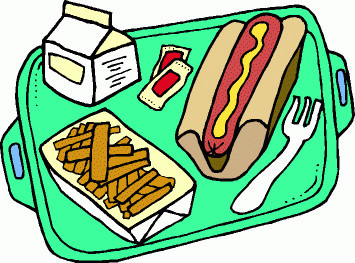Are low-fat school lunches making kids fat?
Many American kids are fat.
Americans do not like saying that, and we like hearing it even less, but no matter how much one can try to sugar-coat the issue, the fact remains that one in three children and adolescents in the country are overweight or obese, according to the Centers for Disease Control and Prevention, or CDC.
In the 30 years leading up to 2012, the obesity rate more than doubled in children and quadrupled in adolescents, according to CDC figures. The trend is unlikely to be much different in Riverdale: Social disparities in obesity in the United States are relatively small, compared to other countries, according to the Organization for Economic Co-operation and Development, an intergovernmental economic organization comprising 35 member nations, including the United States.
As children head back to school next week, they will be relying on school cafeterias for lunches – major meals of the day for many students. The government has been trying to make school lunches healthier and less conductive to obesity, but amid all these efforts, the menus remain based on flawed and outdated beliefs, according to researchers, including those who work for the government.
The spike in childhood obesity over the past three decades took place at a time when the government was urging Americans to switch to low-fat diets and eat more carbohydrates. Eating fat can make you fat, the government argued, but as Americans heeded the advice and cut down on their fat intake, obesity rates soared, instead of declining.
The low-fat campaign finally abated, and then was reversed in recent years. An increasing number of doctors and nutritionists have been citing mounting scientific evidence indicating that cutting down on dietary fat does not help reduce obesity or improve overall health. Scientists on the 2015 Dietary Guidelines Advisory Committee recognized the findings.
“Dietary advice should put the emphasis on optimizing types of dietary fat and not reducing total fat,” the committee said in its 2015 report. In particular, “the consumption of ‘low-fat’ or ‘nonfat’ products with high amounts of refined grains and added sugars should be discouraged,” the committee added.
But this new research and recommendation seem to be getting little heed from officials who develop and approve school-lunch menus. School cafeterias continue to feed students low-fat, high-carbohydrate meals.
In France, a country renowned for both its gastronomic tradition and low obesity rates, authorities have sharply restricted the use of ketchup – a high-carbohydrate condiment – in school menus. French children continue to enjoy high-fat dishes, such as boeuf bourguignon and cheese, along with naturally high-fat foods such as nuts or avocados.
But in the United States, the “We Can” food program for children, developed by the National Institutes of Health, lists ketchup among its highly recommended “almost any time” foods, on a par with fruits and vegetables.
Although the 2015 Dietary Guidelines Advisory Committee warned against eating sugary low-fat foods, the “We Can” program lists low-fat yogurt among “almost any time” foods, without placing any restrictions on the yogurt’s sugar content. And although the government’s 2015 Dietary Guidelines say that oil needs to be included as part of a healthy diet, with a recommended intake of about 27 grams each day, the “We Can” program lists olive oil and nuts among its less-than-desirable “sometimes foods.”
The “We Can” program also banishes whole milk, many kinds of cheese, and whole-milk yogurt to its least-desirable category of “WHOA – once in a while” foods. Whole-milk yogurt, according to the program, is more hazardous to health than sugary low-fat ice cream or white refined-flour bread.
“The limit on total fat is an outdated concept, an obstacle to sensible change that promotes harmful low-fat foods, [and] undermines efforts to limit refined grains and added sugars,” the dean of the Friedman School of Nutrition Science and Policy at Tufts University, Dariush Mozaffarian, and the director of the Obesity Prevention Center at Boston Children’s Hospital, David S. Ludwig, wrote in an opinion piece in The New York Times a year ago.
But this summer, New York City’s Free Summer Meals program – developed by the same people who plan school-lunch menus – was offering sweet low-fat chocolate milk to children.
As the new school year rolls in, schools will be trying to entice children to eat more fruits and vegetables through the snazzily named “eat your colors” campaign. Potatoes are vegetables, but few people would describe French fries as a healthy vegetable dish. Yet it is French fries, wedge fries and waffle fries that are to be served to New York school children as “eat your colors” vegetables at least once a week, according to the K-8 school lunch menu developed for September by School Food NYC.
Granted, it is easier to get the average American kid to eat French fries than to eat a piece of broccoli or a few asparagus stalks. Yet French kids are happily munching on green vegetables – as well as on the proverbial boeuf bourguignon – and it is hard to believe that French children are by nature somehow more gastronomically sophisticated than their American counterparts.
The United States spends $16 billion a year on school foods, according to an article by Toni Liquori, executive director of School Food FOCUS (Food Options for Children in Urban Schools), published in The New York Times last year. Instead of spending that kind of money on producing meals high in refined carbohydrates that make American children fat, the money could be spent on quality dishes that children would actually want to eat.
Paying for obesity-related health complications is much more expensive: The country’s medical costs associated with obesity were estimated to be $147 billion in 2008, and soared to $245 billion in 2012, according to Health Department figures.






